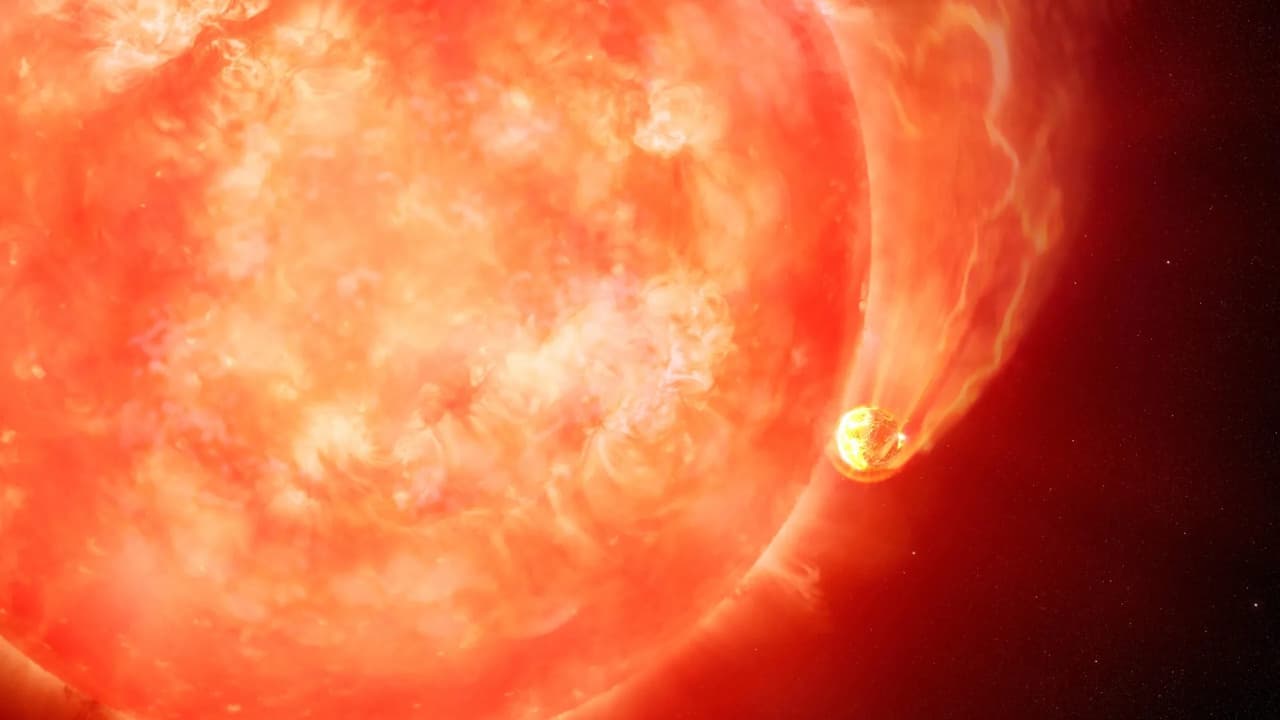Astronomers at UCL and Warwick discovered that aging stars devour nearby planets as they swell into red giants. NASA’s TESS data shows far fewer close-orbiting worlds around older stars, suggesting many have already been destroyed.
In a stunning cosmic discovery, astronomers from University College London (UCL) and the University of Warwick have found evidence that aging stars may consume their closest giant planets as they expand into red giants.
The study, published in the Monthly Notices of the Royal Astronomical Society, used data from NASA’s Transiting Exoplanet Survey Satellite (TESS) to study nearly half a million stars. The researchers noticed a striking pattern — far fewer close-orbiting planets around older, expanded stars, suggesting many have already been destroyed or swallowed.
How Stars Eat Their Planets
When a star like our Sun runs out of hydrogen fuel, it cools and swells into a red giant, growing hundreds of times its original size. This expansion dramatically alters the gravitational balance, dragging nearby planets inward.
Lead author Dr. Edward Bryant explained, “As stars evolve off their main sequence, they can quickly cause nearby planets to spiral inwards and be destroyed. We now have direct evidence of this happening across a large population of stars.”
He likened the process to a gravitational tug-of-war: “Just as the Moon’s pull creates tides on Earth, a planet’s gravity tugs on its star, slowing its orbit until it eventually falls in.”
Could the Same Happen to Earth?
Co-author Dr. Vincent Van Eylen offered a sobering perspective: “In about five billion years, our Sun will also become a red giant. Earth might survive the expansion — but life on it almost certainly won’t.”
The team identified 130 planets orbiting evolved stars — including 33 new discoveries. The data revealed that giant planets are much rarer around older stars, dropping from 0.35% in younger stars to just 0.11% in red giants.
What’s Next for Planetary Science
Astronomers plan to measure these planets’ masses using “stellar wobble” — tiny shifts in starlight caused by a planet’s gravity — to understand how and why these doomed worlds spiral toward destruction.
The research offers new insight into the life cycle of stars and the ultimate fate of planetary systems, including our own.
